We may not have the course you’re looking for. If you enquire or give us a call on 01344203999 and speak to our training experts, we may still be able to help with your training requirements.
Training Outcomes Within Your Budget!
We ensure quality, budget-alignment, and timely delivery by our expert instructors.

Quality Assurance (QA) is an integral element within the software development lifecycle that ensures the delivery of reliable, high-quality software products. In today’s tech-driven world, software systems play a critical role in various industries, making it essential to have robust QA practices in place.
QA is a systematic process that ensures software products meet specific requirements and are free from defects. Read this blog to explore the concepts of QA in Software Testing, its examples, benefits, and testing methods.
Table of Contents
1) Understanding Quality Assurance in Software Testing
2) Quality Control vs. Quality Assurance
3) Benefits of QA in Software Testing
4) Methods of Quality Assurance in Software Testing
5) Examples of QA in Software Testing
6) Conclusion
Understanding Quality Assurance in Software Testing
Quality Assurance involves a set of activities that focus on preventing defects and ensuring that the software development process is efficient and effective. It encompasses processes, methodologies, and techniques to maintain and enhance the quality of software products. QA is not just limited to the testing phase; it begins from the early stages of the development lifecycle.
Elevate your Software Testing career with our Certified Software Testing Professional (CSTP) Course. Sign up now and become a certified expert!
Quality Control vs. Quality Assurance
Today, the terms Quality Control (QC) and Quality Assurance (QA) are often used interchangeably. However, they represent distinct facets of the Software Testing and validation process. Understanding the differences between these two concepts is crucial for building reliable and high-quality software products. Here is the major difference:
1) Quality Control: Quality Control primarily focuses on identifying and rectifying defects or issues in the software product. It involves the actual testing and inspection of the software to ensure that it meets the specified requirements and standards. QC is concerned with catching defects that have already occurred and determining whether the software adheres to the predetermined quality criteria.
2) Quality Assurance: Quality Assurance, on the other hand, is a proactive process that encompasses a set of systematic activities designed to prevent defects from occurring in the first place. QA involves implementing processes, methodologies, and standards to ensure that the software development process itself is of high quality. It is about creating a framework within which high-quality software can be consistently produced.
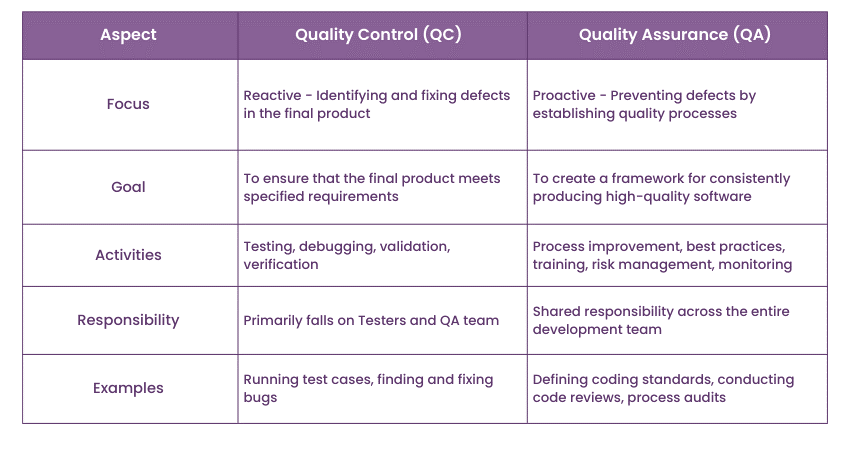
Benefits of Quality Assurance in Software Testing
QA in Software Testing goes beyond just identifying and fixing bugs; it offers a plethora of benefits that contribute to the success of software projects and a company's overall reputation. Let's delve deeper into the key benefits that effective QA practices bring to the table:
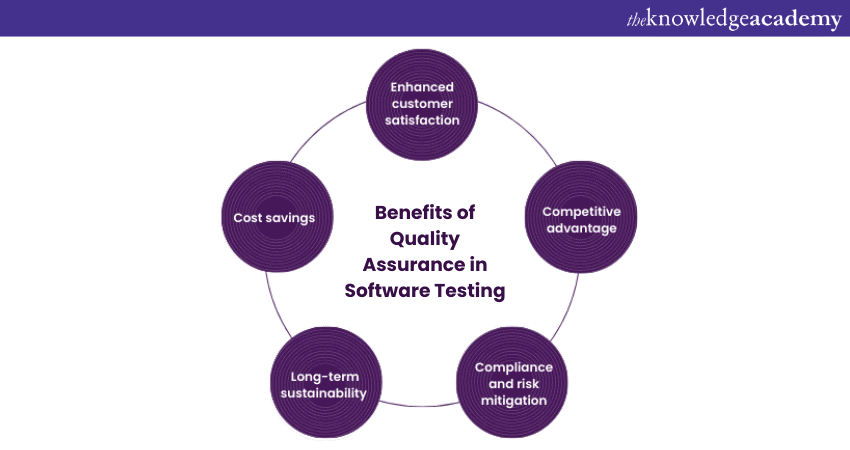
Enhanced customer satisfaction
At the heart of any successful software product is the satisfaction of its users. QA plays a key role in ensuring that the software meets the expectations and needs of its intended audience. By rigorously testing the software for functionality, performance, and user experience, QA teams can identify and rectify issues before they reach the end-users.
This proactive approach significantly reduces the probability of users encountering bugs, crashes, or other usability problems. As a result, users are more likely to have a positive experience with the software, leading to higher customer satisfaction rates and improved user retention.
Cost savings
While some may see QA as an additional cost, it's more accurate to view it as an investment that leads to substantial cost savings in the long run. Identifying and addressing defects during the development phase is far more cost-effective than dealing with them after the software has been released to the market.
Post-release bug fixes can be time-consuming and resource-intensive, often requiring updates, patches, and customer support efforts. QA helps catch issues early, preventing them from snowballing into larger problems down the line. By reducing the need for extensive post-release bug fixing, QA contributes to cost savings in terms of both time and resources.
Competitive advantage
Software products that are reliable, user-friendly, and bug-free attain a distinct competitive advantage in the market. In an era where consumers have an array of options to choose from, a superior software experience can set a company apart from its competitors.
QA enables companies to deliver products that consistently meet or exceed user expectations, creating a loyal customer base and boosting market share. Moreover, a reputation for quality can attract partnerships and collaborations, further strengthening the company's position within the industry.
Compliance and risk mitigation
Certain industries, such as healthcare and finance, have stringent regulatory requirements that software must adhere to. Failure to meet these requisites can lead to legal issues, fines, and reputational damage.
QA ensures that software is tested against regulatory standards, minimising the risk of non-compliance and potential legal repercussions. Additionally, QA identifies potential security vulnerabilities and helps in implementing measures to mitigate cyber risks, safeguard sensitive user data and protect the company's interests.
Long-term sustainability
Software products are not static; they evolve through updates, enhancements, and new features. A strong QA foundation ensures that as the software grows and changes, its quality remains intact. QA practices contribute to the establishment of reliable and scalable testing frameworks, making it easier to maintain and improve the software in the long run. This sustainability is crucial for minimising technical debt and ensuring that the software remains relevant and competitive over its lifecycle.
Unlock the power of Software Testing and automation through expert-led Software Testing And Automation Training. Join today for a successful QA career!
Methods of Quality Assurance in Software Testing
Quality Assurance in Software Testing involves various methods to ensure that software products meet the desired quality standards. Let's explore the different methods of QA in Software Testing:
Manual Testing
Manual Testing is a traditional approach where human Testers manually execute test cases without using automated tools. This method relies on the tester's intuition, creativity, and domain knowledge to simulate user interactions and identify potential defects.
Manual Testing is particularly effective for exploratory testing, where Testers explore the software's functionalities without pre-defined scripts. It also suits scenarios where test cases are rapidly changing or where human judgment is critical, such as usability testing.
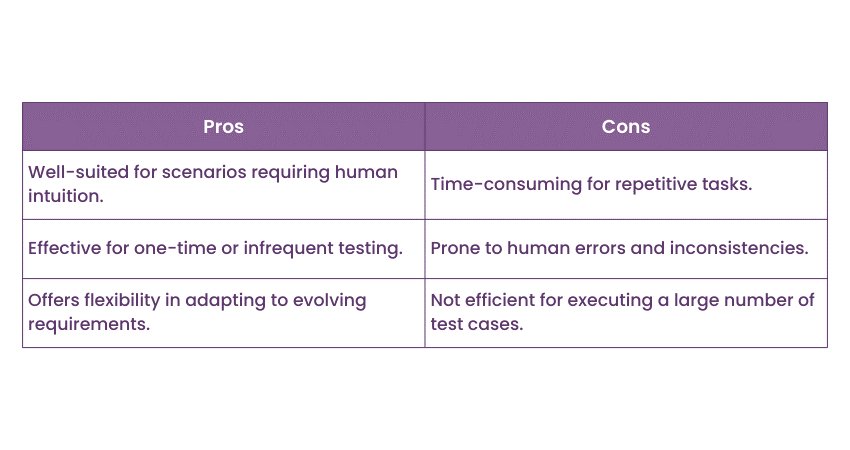
Automated Testing
Automated Testing involves the use of specialised testing tools to execute pre-defined test cases automatically. This method is particularly effective for repetitive tasks, regression testing, and load testing.
Automated Tests can be scripted to simulate user interactions, validate functionalities, and compare expected outcomes with actual results. The tests can be run repeatedly with minimal effort, providing rapid feedback on software quality.
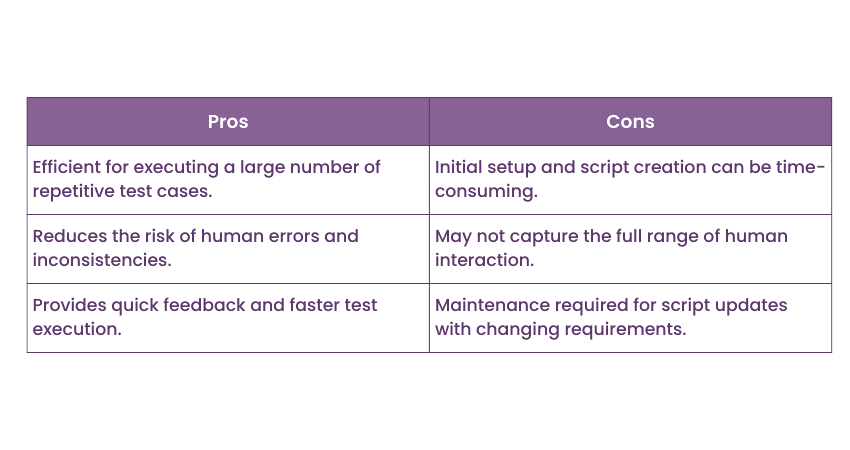
Continuous Integration and Continuous Delivery (CI/CD)
CI/CD is a modern approach that integrates QA into the software development and deployment pipeline. It involves frequent Code Integration, Automated Testing, and Continuous Deployment of changes to production environments. CI/CD emphasises building, testing, and deploying smaller, manageable increments of code, which reduces the risk of introducing defects and allows for rapid feedback and correction.
In the CI/CD workflow, every code change triggers a series of Automated Tests, ranging from unit tests to end-to-end tests. This approach ensures that changes are thoroughly tested before being merged into the main codebase, promoting early defect detection and prevention.
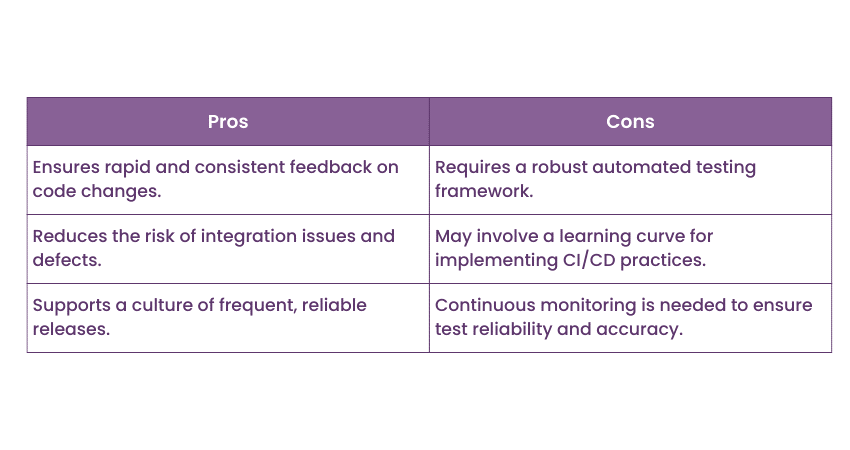
Exploratory Testing
Exploratory Testing is a dynamic approach where Testers explore the software's functionalities, features, and user interactions without pre-defined test cases. Testers use their creativity, intuition, and domain knowledge to identify defects and scenarios that might not be covered by scripted tests. Exploratory Testing is especially effective for uncovering unexpected issues, validating user experience, and gaining a deeper understanding of the software's behaviour.
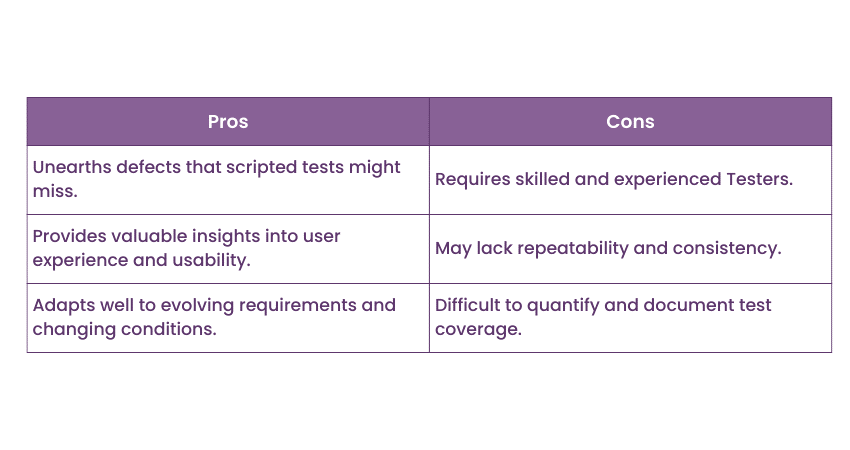
Master Manual Testing techniques and ensure software quality with hands-on training from experts - Register for our Manual Testing Training Course now!
Examples of Quality Assurance in Software Testing
Quality Assurance in Software Testing involves a wide range of activities that ensure software products meet the desired quality standards. Let's delve into specific examples of how QA practices are applied in various real-world scenarios:
1) Web applications
Consider a scenario where a software development company is building a web application for online banking. Here, QA plays a pivotal role in ensuring the application's security, functionality, and user experience. Here are some examples of QA practices for web application testing:
a) Functionality testing: QA Testers thoroughly test each feature of the web application. For instance, they verify the user authentication process, ensuring that login credentials are validated correctly and that only authorised users can access their accounts.
b) Usability testing: QA assesses the user interface to ensure it's intuitive and user-friendly. They test navigation, button placements, and overall design to provide a seamless user experience.
c) Compatibility testing: QA Testers ensure that the web application functions consistently across different browsers (such as Chrome, Firefox, and Safari) and devices (desktops, tablets, and smartphones).
d) Performance testing: QA conducts load testing to ensure the application can handle a large number of simultaneous users without slowing down or crashing. This is crucial for preventing bottlenecks during peak usage times.
2) Mobile app testing
When it comes to mobile applications, QA is essential to deliver a smooth and reliable user experience across various devices and platforms. Let's explore QA practices in mobile app testing:
a) Device compatibility: QA Testers verify that the mobile app works seamlessly on different devices with varying screen sizes, resolutions, and hardware capabilities.
b) Functional testing: QA ensures that all app features, such as buttons, menus, and interactions, are functioning as intended. For example, they test the checkout process in an e-commerce app to confirm that items can be added to the cart and purchases can be completed.
c) Performance testing: QA assesses the app's performance under different conditions, including low network connectivity and varying levels of device resources. This ensures that the app remains responsive and functional even in challenging scenarios.
d) Security testing: QA identifies vulnerabilities that could compromise user data or the app's integrity. They test authentication mechanisms, data encryption, and permissions to ensure the app is secure from potential threats.
Conclusion
Quality Assurance in Software Testing is a critical component of the software development process. It ensures that software products are of high quality, reliable, and meet user expectations. Organisations can achieve robust QA practices and deliver exceptional software products by employing various methods such as manual and automated testing. Adopting best practices ensures that QA becomes an integral part of the development culture, ultimately leading to successful software outcomes.
Enhance your Software Testing skills with our expert training. Join now for comprehensive Software Testing Courses!
Frequently Asked Questions
Upcoming Business Improvement Resources Batches & Dates
Date
 Software Testing Automation Course
Software Testing Automation Course
Thu 20th Jun 2024
Thu 5th Sep 2024
Thu 12th Dec 2024







 Top Rated Course
Top Rated Course



 If you wish to make any changes to your course, please
If you wish to make any changes to your course, please


